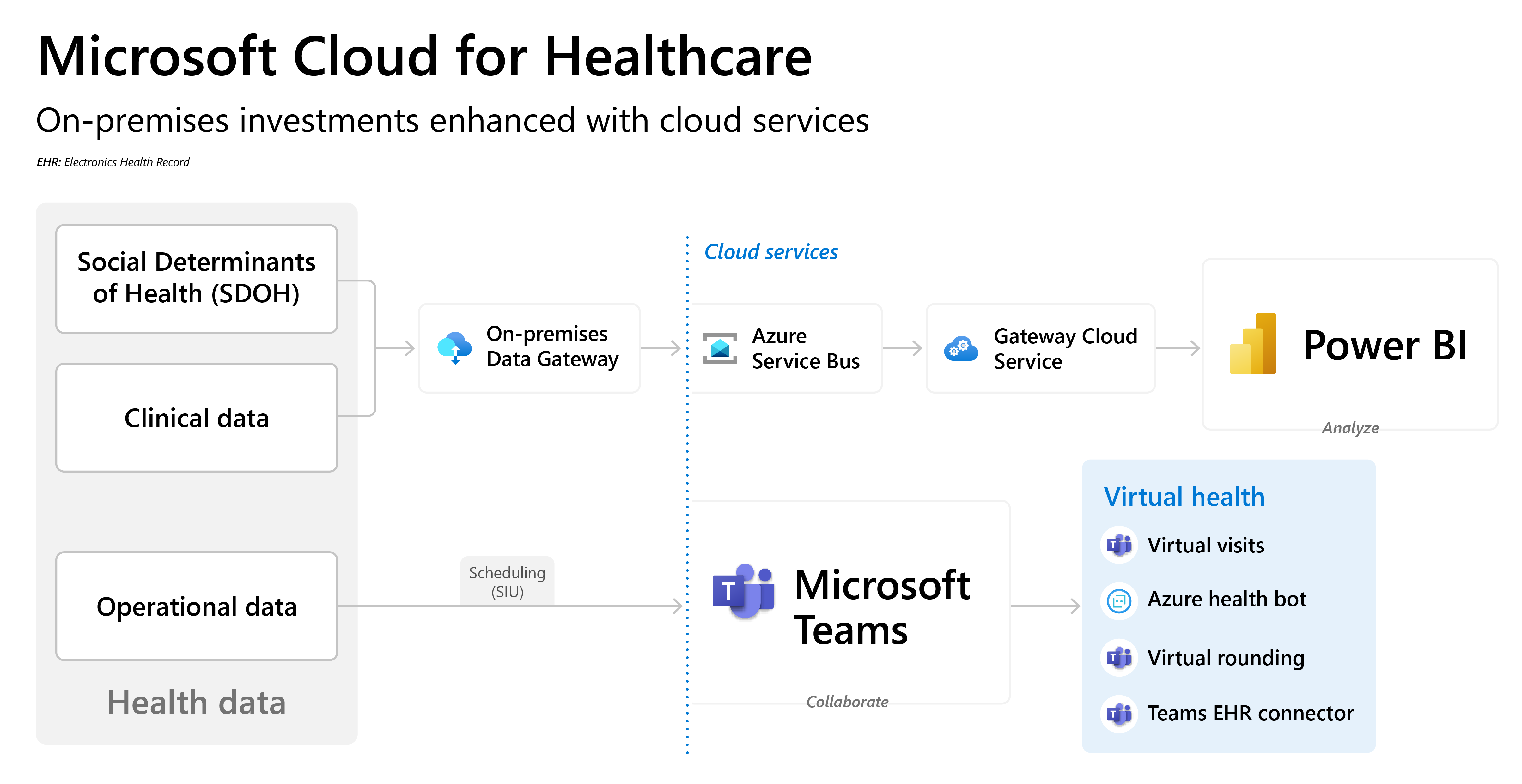Enhance on-premises architecture with cloud services
Healthcare organizations adopt Microsoft Cloud services to connect to their existing on-premises architecture.
The following diagram depicts multiple silos of health data, and sample data flows. Microsoft Cloud-connected services help analyze on-premises data and improve customer and care team collaboration.
Download a printable PDF of this reference architecture diagram.
EHR-connected virtual visits
Through SMART on FHIR (Fast Healthcare Interoperability Resources) and deep linking, care teams can launch collaboration and communication interactions in Microsoft Teams directly from an EHR. The Microsoft Teams Electronic Health Record (EHR) connector makes it easy for clinicians to launch a virtual patient appointment or consult with another provider in Microsoft Teams directly from Cerner or Epic EHR systems. Built on the Microsoft 365 cloud, Microsoft Teams enables simple, secure collaboration and communication in a single hub with chat, video, voice, and healthcare tools. Teams also supports compliance with the Health Insurance Portability and Accountability Act (HIPAA) and Health Information Technology for Economic and Clinical Health (HITECH) certifications.
On-premises data gateway
Cloud adoption road maps start with movement of selected datasets to the cloud. An on-premises data gateway acts as a bridge to provide quick and secure data transfer between on-premises systems and Microsoft Cloud services. These cloud services include Power BI, Power Apps, Power Automate, Azure Analysis Services, and Azure Logic Apps. Organizations can keep databases and other data sources on their on-premises network by using a gateway and securely use that on-premises data in cloud services. With Power BI dashboards and reports, healthcare organizations can gain clinical and operational insights. These insights allow multiple users to connect to health data, including clinical, business operational data, social determinants of health, and employee data. Complex reports might require further data integration that can more effectively be done in the cloud.
